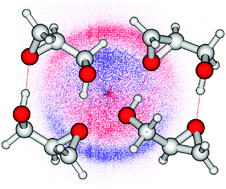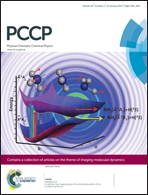A photoionization investigation of small, homochiral clusters of glycidol using circularly polarized radiation and velocity map electron–ion coincidence imaging
Abstract
A detailed study of the valence photoionization of small homochiral glycidol (C3O2H6) clusters is carried out with the help of circularly-polarized VUV synchrotron radiation by recording photoionization-based spectroscopic data detected by velocity map electron imaging with coincidence ion selection. We show that information on the stability of cationic as well as neutral chiral clusters can be obtained with enhanced sensitivity by examining the chiral fingerprint encapsulated in Photoelectron Circular Dichroism (PECD) spectra. In particular, by varying the clustering conditions we demonstrate that the PECD signal effectively carries the signature of the neutral precursor species, prior to any fragmentation of the ion, as may be inferred from the below-threshold monomer measurements (including ion imaging). Here the monomer's direct ionization channel is closed and the monomer ion hence must result exclusively as a fragment from dissociative ionization of the dimer (or higher) clusters. At higher photon energies, the mass-selection on the electron spectroscopy data, achieved through filtering the electron images in coincidence with selected ion masses, evidently succeeds in providing a degree of size-selection on the neutral clusters being ionized with, in particular, a clear differentiation of monomer and dimer PECD, showing the strong sensitivity of this chiroptical effect to the non-local long-range molecular potential.

- This article is part of the themed collection: Imaging molecular dynamics

 Please wait while we load your content...
Please wait while we load your content...